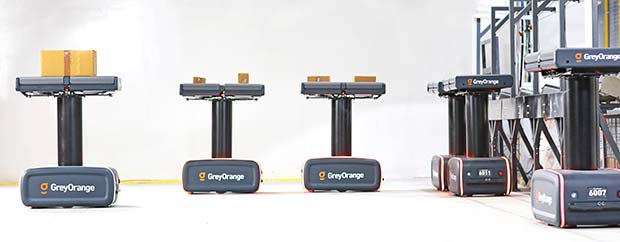Machines taking up jobs previously carried out by humans is nothing new. Even before the full impact of the COVID-19 pandemic was clear, it was predicted that automation and robotics would execute 85 million manual jobs over the next five years.
 But this creates opportunity too. According to ‘The Future of Jobs 2020 report’ released by the World Economic Forum (WEF) in October 2020 the robotics revolution will create 97 million new jobs. Additionally, in 2025, analytical thinking, creativity and flexibility will be amongst the top skills needed and the most competitive businesses will be those that choose to reskill and upskill current employees.
But this creates opportunity too. According to ‘The Future of Jobs 2020 report’ released by the World Economic Forum (WEF) in October 2020 the robotics revolution will create 97 million new jobs. Additionally, in 2025, analytical thinking, creativity and flexibility will be amongst the top skills needed and the most competitive businesses will be those that choose to reskill and upskill current employees.
At the same time, retailers are facing unprecedented demand from consumers. Customers expect faster deliveries, enhanced service, and better customer experiences. Almost half of consumers (45%) said they would not order from a brand again if their order didn’t arrive within two days.
The supply chain crisis hits…
The recent widespread worker shortages in the UK has caused many employers’, and indeed the government’s, attention to turn towards automating routine jobs that can be easily done by AI powered robotics.
The reasons behind the worker shortages are not entirely clear. Some economists feel that extended payments to furloughed workers has allowed people to remain out of the work for longer. However, evidence from 26 US states, which discontinued their unemployment benefits ahead of their official expiration date, suggests that factors such as continuing fears over COVID may have played a part.
In the UK, BREXIT has also exacerbated the situation. One million non-UK born residents left the UK after BREXIT and at least 200,000 EU nationals. Typically, these workers filled roles in sectors such as agriculture, transportation and logistics. Many are now left vacant, and a strategy to avoid a reoccurrence of the crisis is yet to be determined.
Reform and transformation
When the term “supply chain” became popular in the 1950s and 1960s, that’s exactly what it was — one link in the chain to the next. A linear process that connected manufacturers to consumers, with a product or service stopping at one point along the chain, then moving to the next. The most successful modern fulfilment models no longer resemble this dynamic.
Today’s organisations have more connections and touchpoints relating to the goods within our economies. Consumers expect multiple fulfilment options to be available to them, and the linear chain structure no longer functions in the manufacturer-to-consumer network. All of the various components within this new mesh of nodes (manufacturers, warehouses, stores, etc.) must take on new roles and new capabilities to create this omnichannel fulfilment network.
Every point in our supply network now is a fulfilment node — at least, that’s the goal we should be working toward. Examining and redefining our terms is an important first step in that process.
The perfect team
Mapping out the different challenges that each node faces is crucial. While this crisis is in part due to Brexit and the loss of a European workforce, it also reflects the often tedious and dangerous nature of those jobs within logistics, retail, food service, and manufacturing, which are the industries most affected by the labour shortages. The UK Government has indicated that it plans to encourage people that are in routine, predictable, and/or physically challenging jobs, to retrain or upskill to more skilled jobs where there are vacancies.
Many employees working in logistics may find that their jobs will not disappear completely. Instead their roles will be enhanced by working with robots at their side assisting them. Robots are often best used to augment human skills, not replace them. Robotics in fulfilment centres, for example, have helped retailers to reduce their labour costs by as much as one-third (33%), while also reducing order fulfilment time by as much as 50%.
As robots become more sophisticated, humans will be freed to upskill and do the skill orientated jobs that are currently experiencing shortages. Not only that, they may be able to do their existing jobs, but with the benefit of robotic assistance. Firms that see machines as an easy way of replacing workers will miss out on the huge potential of artificial intelligence.
Logistex in partnership with GreyOrange can provide UK customers with leading edge robotics solutions as part of a fully integrated system. For more information on how robotics solutions could enhance your operation, get in touch with Logistex at enquiries@logistex.com




Comments are closed.